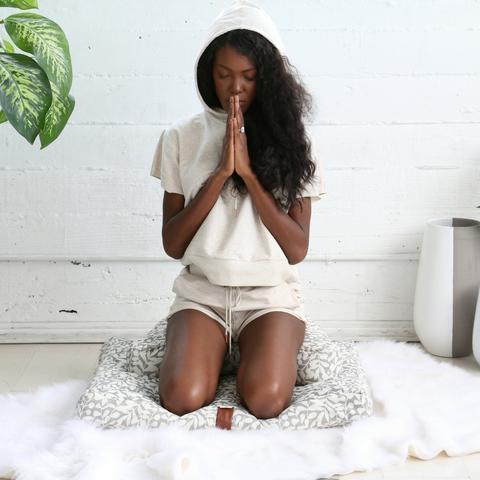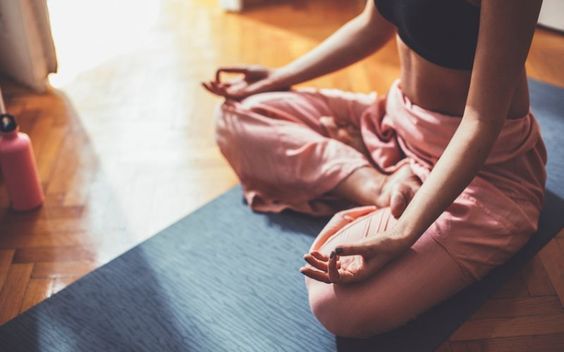“Breathe calmly, exhale anxiety.” These are the thoughts that swirl around in your head as you try to clear your mind.
The idea of meditation has made the rounds on social media, and many users on platforms such as TikTok and Instagram are encouraging younger generations to start a meditation practice. It’s not as easy as influencers say, and figuring out how to start meditating can be tricky.
Below are some tips and tricks to help your meditation practice thrive.
What is meditation ?
Word meditation has been commonly used for the past few months, but many don’t know what it means. The act of meditating is intended to clear the mind of troubling thoughts and enhance your awareness. Your awareness can include awareness of your surroundings, the sensations you feel, and even the taste of different substances. By focusing on your awareness, you learn to observe your thoughts and feelings without judging them good or bad.
Meditation originated many years ago and although many different civilizations are believed to have practiced it, meditation is most likely derived from religious practices associated with Buddhism. This religion is based on the idea that practitioners sit and breathe consciously to achieve inner peace. Meditation began to move to Western cultures from the 19th century as a result of colonization. At that time, meditation was practiced mainly by scholars and missionaries who knew the ancestry.
What are the health benefits?
In addition to improving focus, meditation has numerous health benefits that improve both mental health and mental illness. When you become aware of how your body feels, you can manage your pain better. With the help of meditation, pain associated with conditions such as asthma, cancer, high blood pressure, and heart disease can be managed.
Mental health issues such as anxiety and depression are helped by meditation practices. When we become anxious, our heart rate increases rapidly because it believes we are in danger. Using breathing exercises helps get air into our lungs and signals our brain to slow our heart rate.
Although meditation does not cure disease, it is a useful tool that can improve our mental health and relieve pain.
How to start
As with any new hobby, one of the most difficult tasks is getting started. Just as running is healthy for our heart, meditation improves concentration, awareness and opens our mind to new perspectives. By starting a meditation practice, you are improving your mind and preparing yourself to successfully deal with any obstacles life may throw at you. Below are five tips that will help you get started in your meditation practice.
1. Choose your meditation space

One of the most important aspects of starting your meditation practice is deciding where to meditate. Try to find a quiet, peaceful space where you feel safe. Eliminate distractions in your meditation space, such as background noise like voices on TV. Find a place where you can be comfortable. It can be a yoga mat on the floor or a comfortable chair. Whatever space you choose, make sure it’s an area you can focus on.
2. Use an app

When you’re just starting out, it can be hard to know what to do. The best way to understand how to meditate is to use an app.
There are several apps for Apple and Android phones that guide you through meditations. These apps offer many types of meditations depending on what you are looking for. I highly recommend downloading one to help you start your meditation practice.
3. Create a routine

Another important part of meditation is creating a consistent routine. To help you achieve this, try setting aside a specific time of day to meditate.
Meditate at the same time every day. By doing this, you give yourself a routine and you create a habit of meditation. Setting aside a specific time will encourage you to meditate daily. Whatever time you choose, make sure it will fit your schedule. It won’t help if you choose a time that will only work for a week.
To meditate regularly, I find the best time is either right after you wake up or right before you go to bed. For most of us, we wake up and go to sleep around the same time every day. If you choose to meditate at one of these times, you are more likely to meditate at the same time each day.
4. Experiment

There are different types of meditation for different types of goals. Not all meditations work for you, so it’s important to experiment and try different practices.
For example, maybe you want to focus on a task. You may want to practice focusing on your breathing and labeling things that distract you from your breathing. Each practice can help you in distinct areas of your life.
5. Practice

As with any new hobby, the more you practice, the better you will get. Meditation takes time, and the more you keep exercising your mind in this way, the easier it will become.
There may be days when you cannot concentrate at all or you feel anxious even after a meditation. It’s normal. Meditation is not a cure, but with time and practice you will feel more focused and relaxed.
Don’t let a bad day ruin your meditation practice. It’s important that you show up and meditate, even if you feel like you’re going with the flow.
Within a few months of practicing meditation, you will see an improvement in your mood and awareness.






